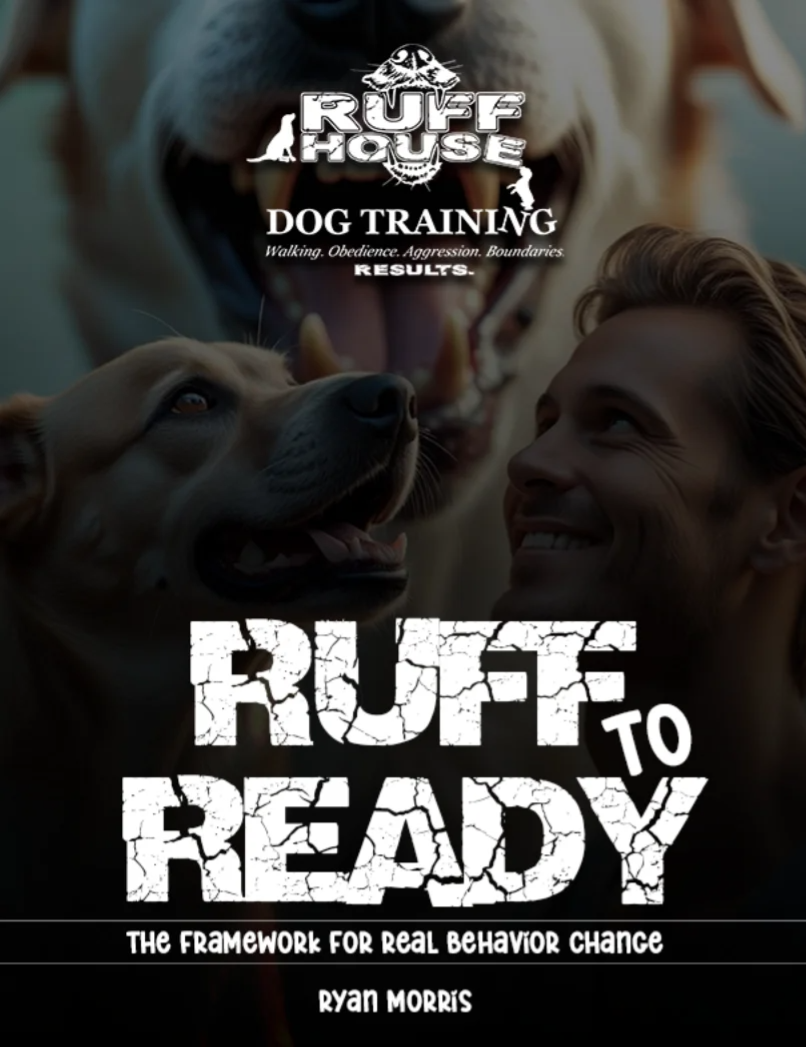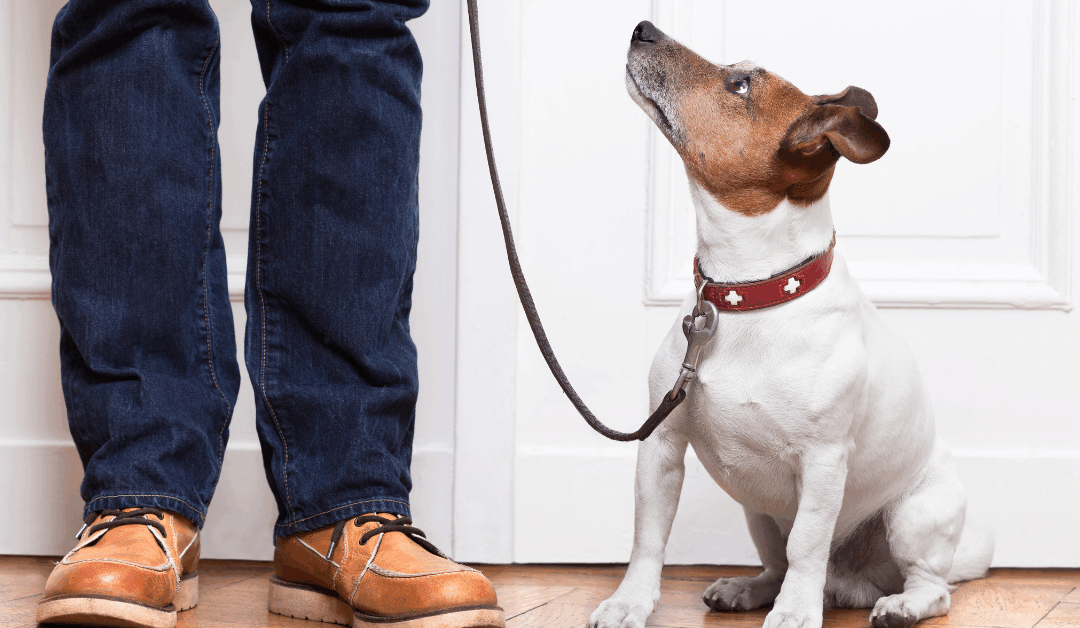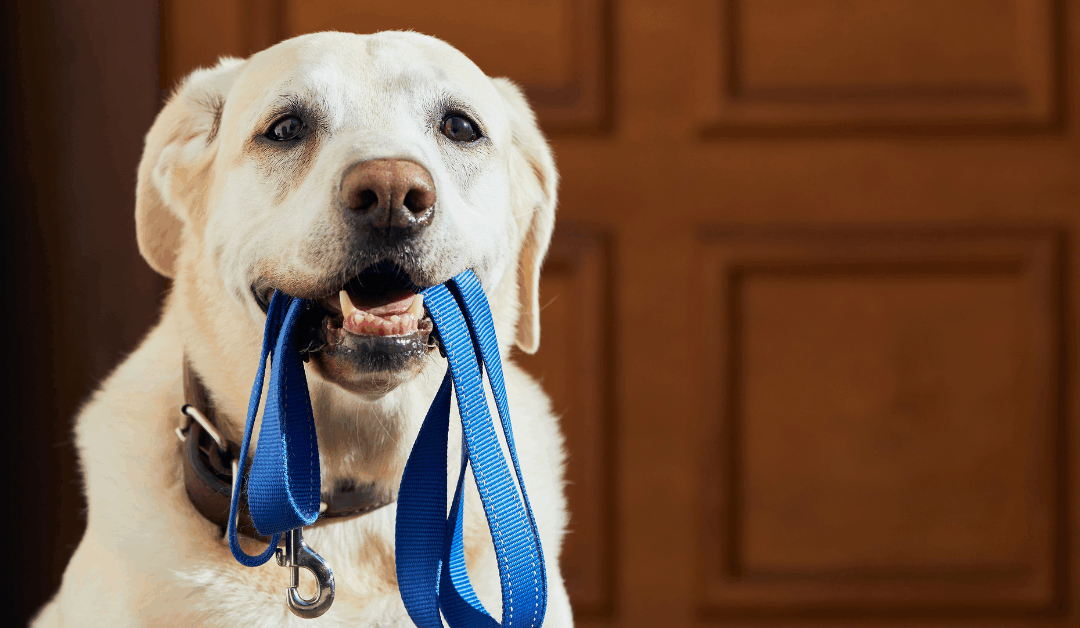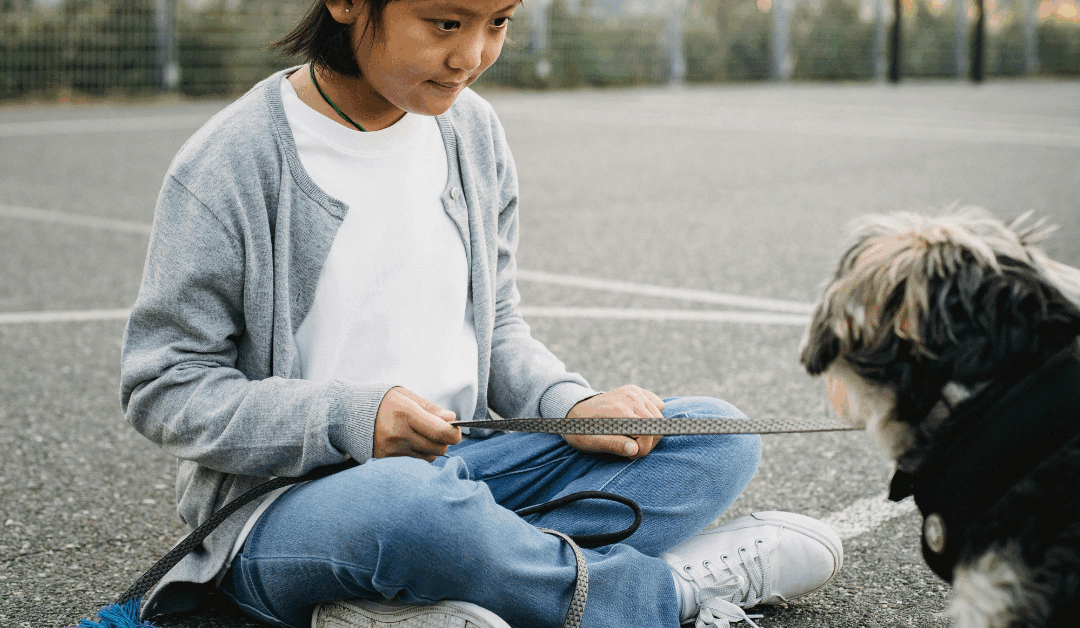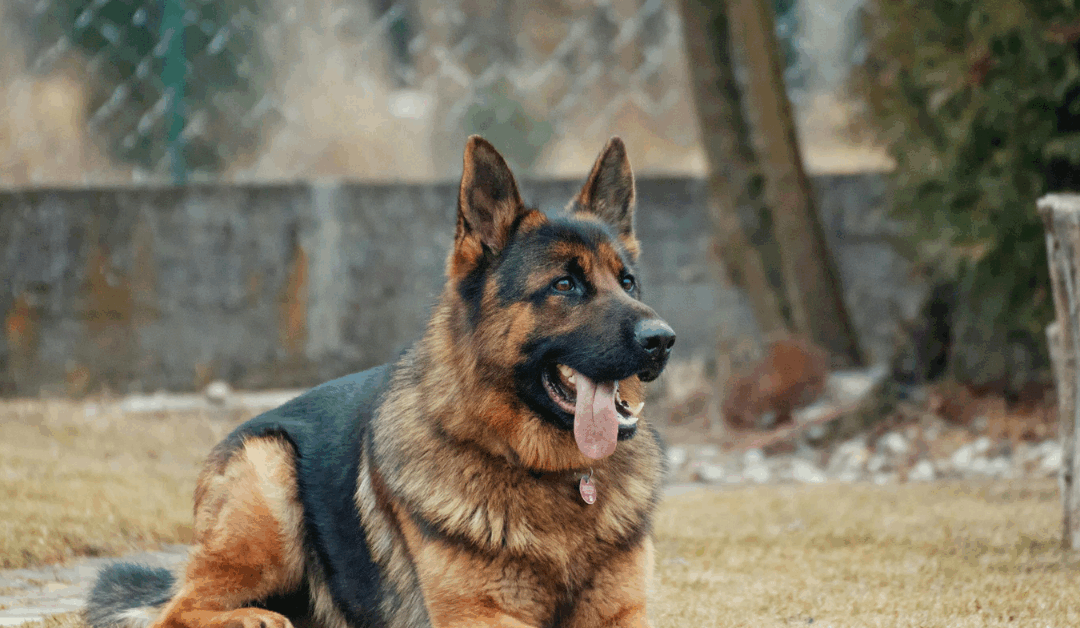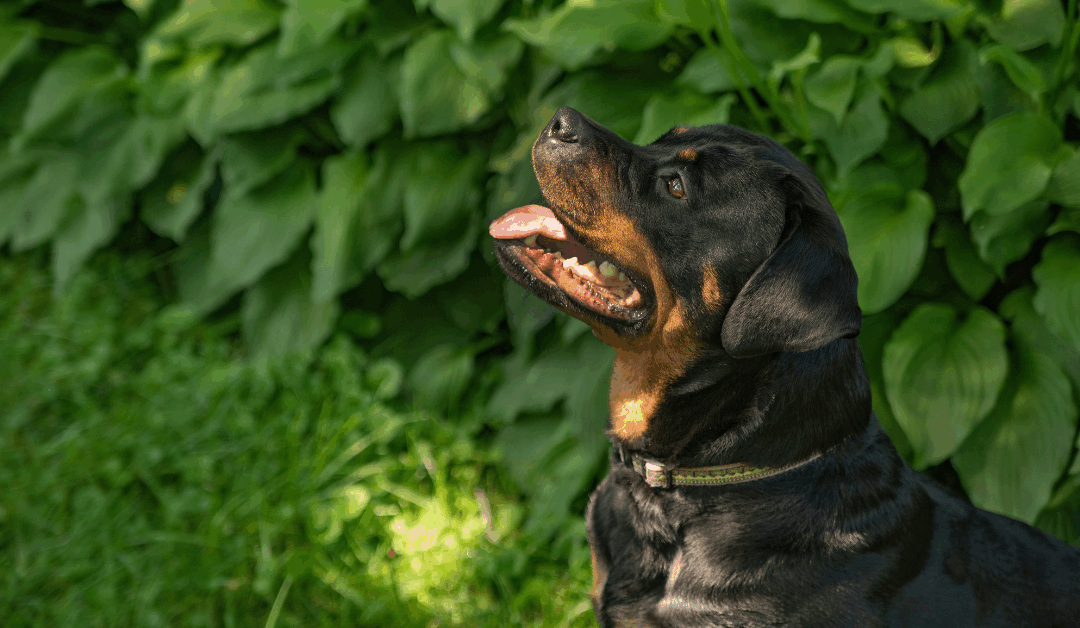As the owner of Ruff House Dog Training, I’ve seen it all. I’ve walked into homes across Fairfax County to find chaos, jumping, barking, biting, and reactivity. The story is often the same: a loving family at their wit’s end, feeling like they’ve tried everything. But here’s the secret—the real work of dog obedience training starts before you even hire a trainer.
Over the years, I’ve noticed a pattern of common mistakes owners make that can unintentionally sabotage their progress. It’s not about blame; it’s about understanding how to set your dog, and yourself, up for success. Life is busy with work commutes, kids, and a million other things. The good news is that avoiding these pitfalls is simpler than you think.

Unlock Real Behavior Change – Download Your Free Guide Now
"*" indicates required fields
This guide will walk you through the five biggest mistakes I see every week and how to steer clear of them. By making a few small shifts in your approach, you can create a foundation for real, lasting behavior change. Let’s get your dog’s transformation started today.
Mistake #1: Waiting Too Long to Start Dog Training
One of the most common refrains I hear from Fairfax County owners is, “I wish I had called you sooner.” Many people hope their dog will simply “grow out of it.” Spoiler alert: they don’t. Behaviors like jumping, pulling on the leash, and excessive barking often get worse over time as they become ingrained habits.
Busy schedules are a major reason for the delay. Between work, family, and life’s general chaos, finding time for dog obedience training feels like one more thing on an endless to-do list. But putting it off only makes the problem harder to solve later.
To set realistic expectations, it helps to understand the 3-3-3 Rule for rescue dogs, which also applies to new puppies.
- 3 Days: Your dog needs time to decompress in their new environment.
- 3 Weeks: They begin to understand routines and household structure.
- 3 Months: A true bond forms, and real behavior changes start to solidify.
This timeline shows that building good habits takes time. While it’s ideal to start puppy training early (around 8–10 weeks), age is never a disqualifier. Older dogs can absolutely learn new skills. The starting point is just different. Whether you have a new puppy or an older rescue, the sooner you start, the faster you’ll see progress.
Mistake #2: Using YouTube Videos as a Full Training Plan
YouTube is a fantastic resource for learning just about anything, but it has its limits when it comes to dog training. The biggest issue? A YouTube video can’t see and watch your dog. It doesn’t know your dog’s specific triggers, body language, or home environment. This often leads to mismatched methods that confuse both you and your dog.
One client told me, “I tried this trick I saw online, and now my dog thinks dinner is optional.” Mixing and matching techniques without understanding the underlying principles can create a jumbled mess of commands—sit, stay, jump, spin—without any real structure.
Consider the 7-7-7 Rule for Dogs:
- 7 Seconds to make a first impression.
- 7 Minutes to explore a new space.
- 7 Hours to decompress from a new experience.
This highlights how quickly dogs process information and form associations. If you’re trying a new command from a video and get the timing wrong, you could accidentally reward the wrong behavior. A professional trainer can provide real-time feedback that a pre-recorded video simply can’t. While online resources are helpful, they are no substitute for a personalized plan. If you’re looking for a reliable starting point, download our Free Behavior Guide for proven techniques.
Mistake #3: Skipping Fundamentals in Dog Obedience Training
Many owners want to jump straight to advanced skills, like perfect loose-leash walking, without first establishing the fundamentals. But your dog can’t run a marathon before they can walk in a straight line. Expecting your dog to ignore distractions on a walk when they don’t have clear boundaries inside the house is setting them up for failure.
True dog obedience training is built on the 3 P’s:
- Patience: Your dog is learning a new language. It takes time.
- Practice: Skills are developed through consistent repetition.
- Persistence: Consistency is more important than perfection.
Skipping these pillars is the fastest way to slow down progress. The fundamentals aren’t flashy commands; they are the bedrock of a well-behaved dog. They include:
- Clear structure and routines
- Consistent boundaries
- Simple, consistent verbal cues
- Proper reward timing
- Understanding your dog’s body language
When these elements are in place, teaching everything else becomes much easier. We help owners go from chaos to calm by focusing on these core principles first.
Mistake #4: Going to Group Classes Before Fixing Home Behaviors
Group classes can be great for socialization and practicing commands in a distracting environment. However, they are not the place to solve foundational behavior issues like reactivity, aggression, or anxiety. If your dog can’t focus in your living room, putting them in a room with 12 other dogs is a recipe for disaster.
This approach often backfires, leaving owners feeling frustrated and their dogs feeling overwhelmed. The dog isn’t learning; they’re just reacting to the overstimulating environment. Most dogs first need one-on-one training to establish clear rules, get proper mental stimulation, and learn to manage their excitement.
At Ruff House, we address this with our 90-Minute Miracle session, which is designed to tackle in-home behaviors head-on. We also offer a 6-Week Obedience program and custom plans for more complex issues like aggression and separation anxiety. By solving problems at home first, we prepare your dog for success in the wider world.
Mistake #5: Expecting the Dog Trainers to Fix Everything
Here’s the biggest truth in dog training: I can train your dog, but if the rules disappear when I leave, so will the results. Your dog listens to you 24/7, not just the trainer for an hour a week. Lasting change happens when the entire household commits to consistency.
I’ve seen it time and again: we practice “sit” during a session, but the family allows the dog to jump on guests the next day. We work on loose-leash walking, but on solo walks, the dog is allowed to pull again. This mixed messaging confuses your dog and undermines all the hard work.
Owner participation in helping our dog learn is the single most important factor for success. We make it easy by providing judgment-free coaching and clear homework tailored to real-life scenarios. Our goal is to empower you with the tools and confidence to lead your dog. And with our unlimited post-session support, you’re never alone in the process. We’re here to offer real solutions, not just temporary fixes.

Start Strong, Train Smarter With Our Adult and Puppy Training
Avoiding these five common mistakes can completely change your dog training journey. By starting with the right mindset and a solid foundation, you can build a relationship with your dog based on clear communication and mutual respect, not frustration.
Progress is possible, and it often happens faster than you think. It should be an empowering and even fun training experience that strengthens your bond. If you’re ready to transform your dog’s behavior and restore peace to your home, let’s work together.
Claim your spot today—our training sessions at our local indoor dog park fill up fast! Because your pup won’t train himself.
Resources Related To Dog Training
- Cornell University – Training ‘Stay’ vs. ‘Wait’: Learn the difference between “stay” and “wait” commands and how to teach them effectively. Check it out here
- City of San Marcos, TX – Pet Training Resources: Includes housetraining guides and other helpful materials for training dogs and puppies. View the resources here
- Virginia Tech Veterinary Medicine – Dog Training Tips: This resource provides practical advice on using balanced reinforcement and other effective training methods. Read more here
- Texas A&M Veterinary Medicine – Training Tips for Dogs: Offers guidance on teaching basic commands like “sit” and “stay,” which are foundational for dog training. Explore the tips here
- Franklin County, Ohio – Online Library/Behavior Information Sheets: A collection of articles, PDFs, and videos to help with basic dog training and behavior management. Access the library here
- American Kennel Club (AKC) – Training Resources: While not a trainer site, the AKC offers a wealth of information on training techniques and dog behavior. Visit the AKC training section
- ASPCA – Dog Behavior and Training: The ASPCA provides comprehensive resources on dog training, including behavior modification and positive reinforcement techniques. Explore ASPCA’s training resources
These resources are from trusted organizations and institutions, ensuring reliable and effective training advice.

